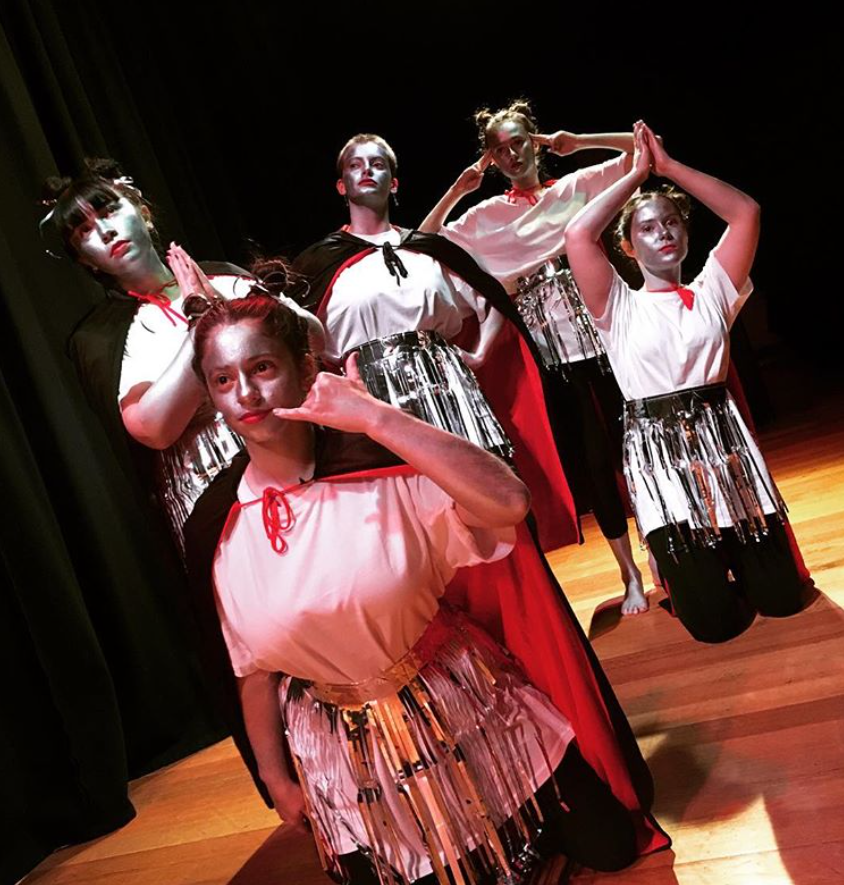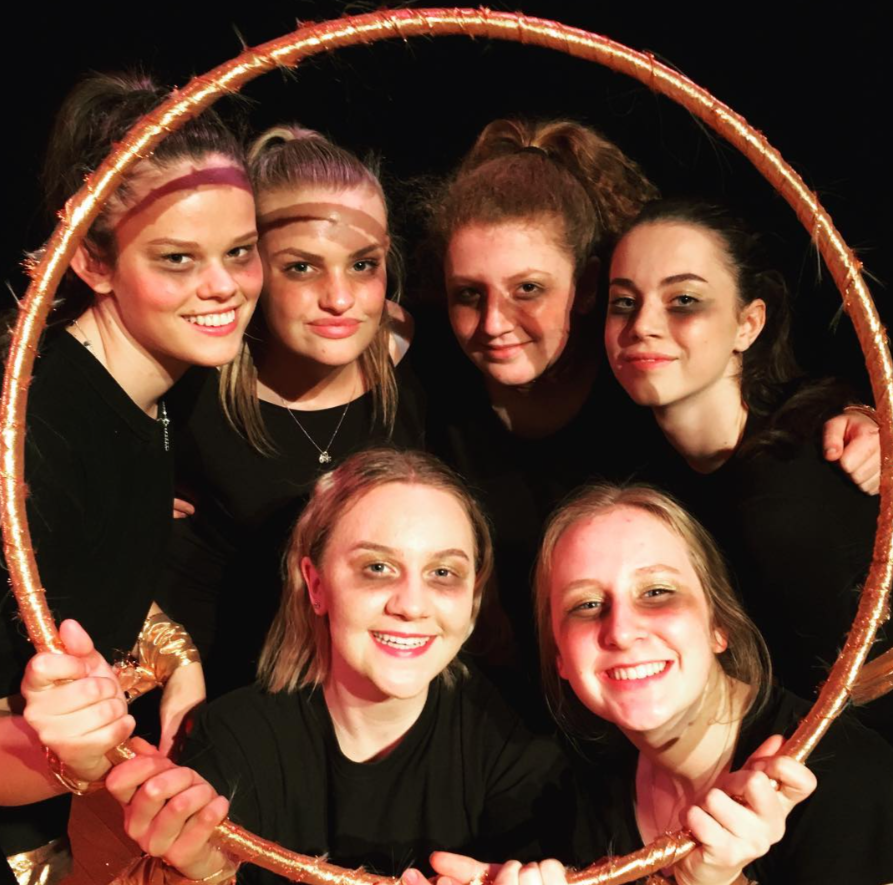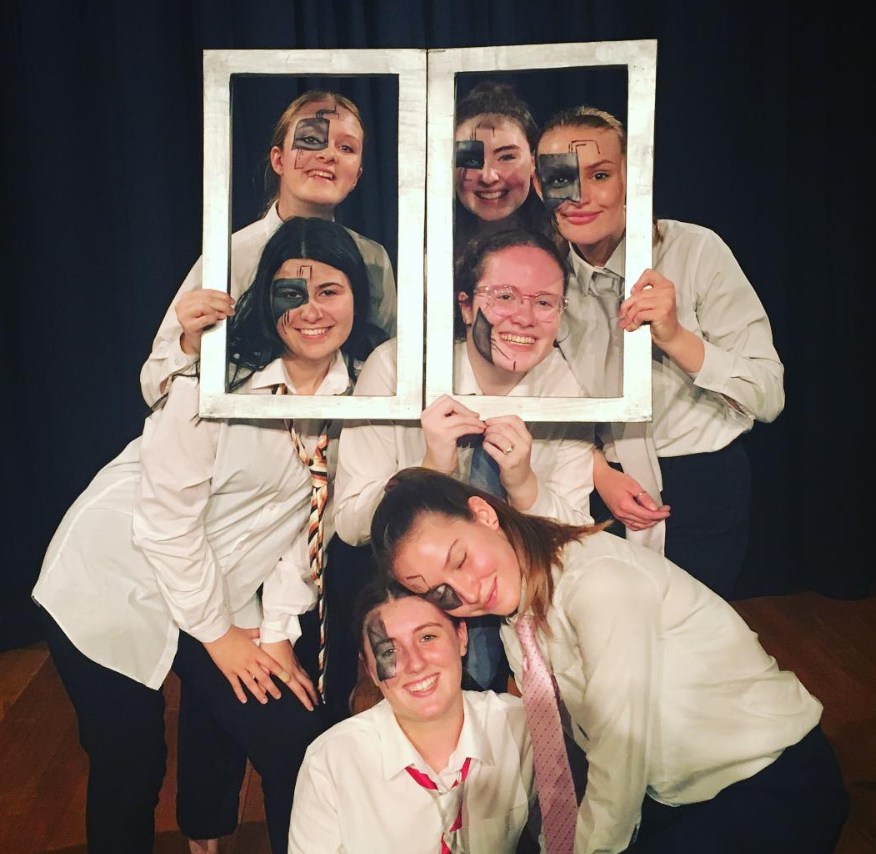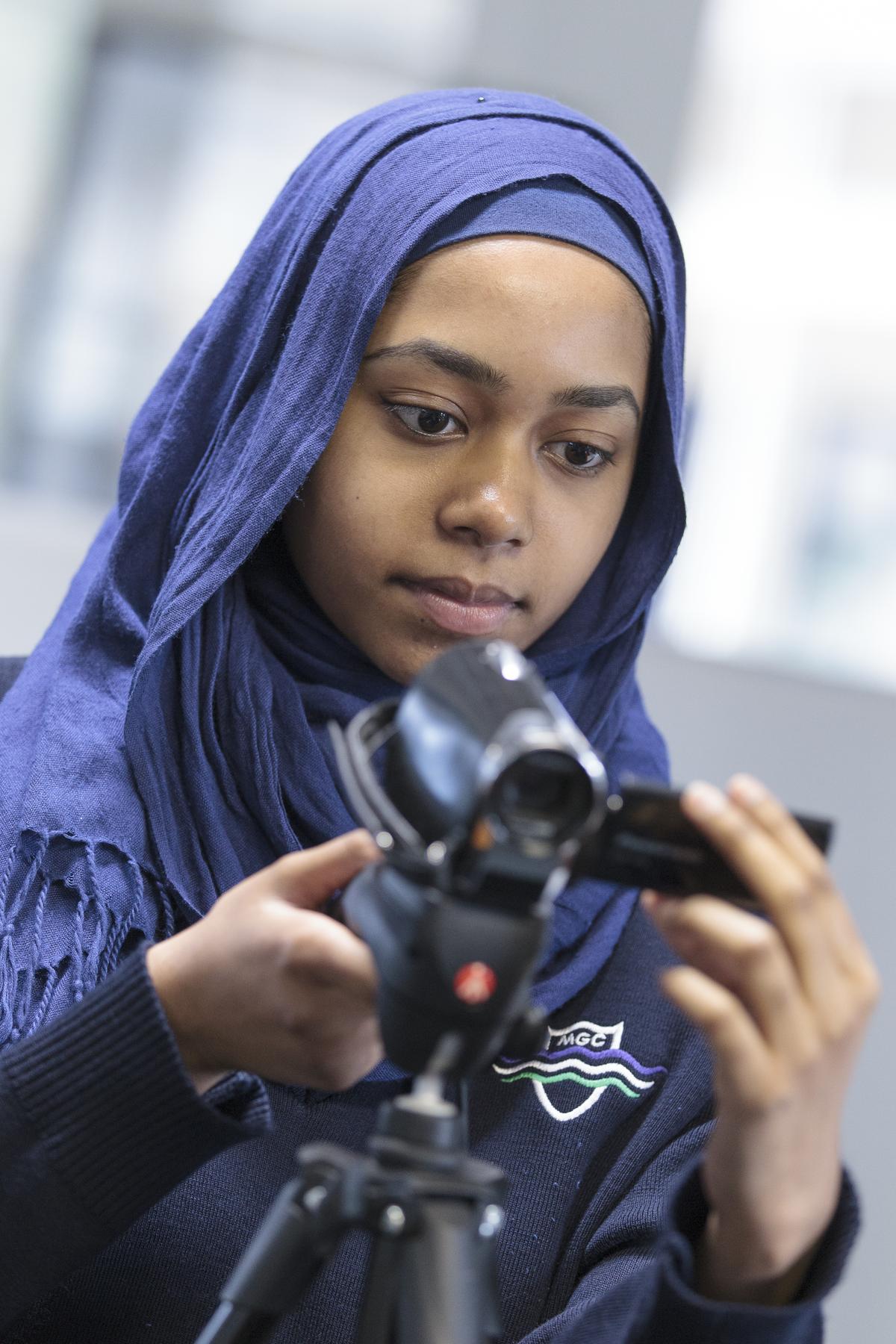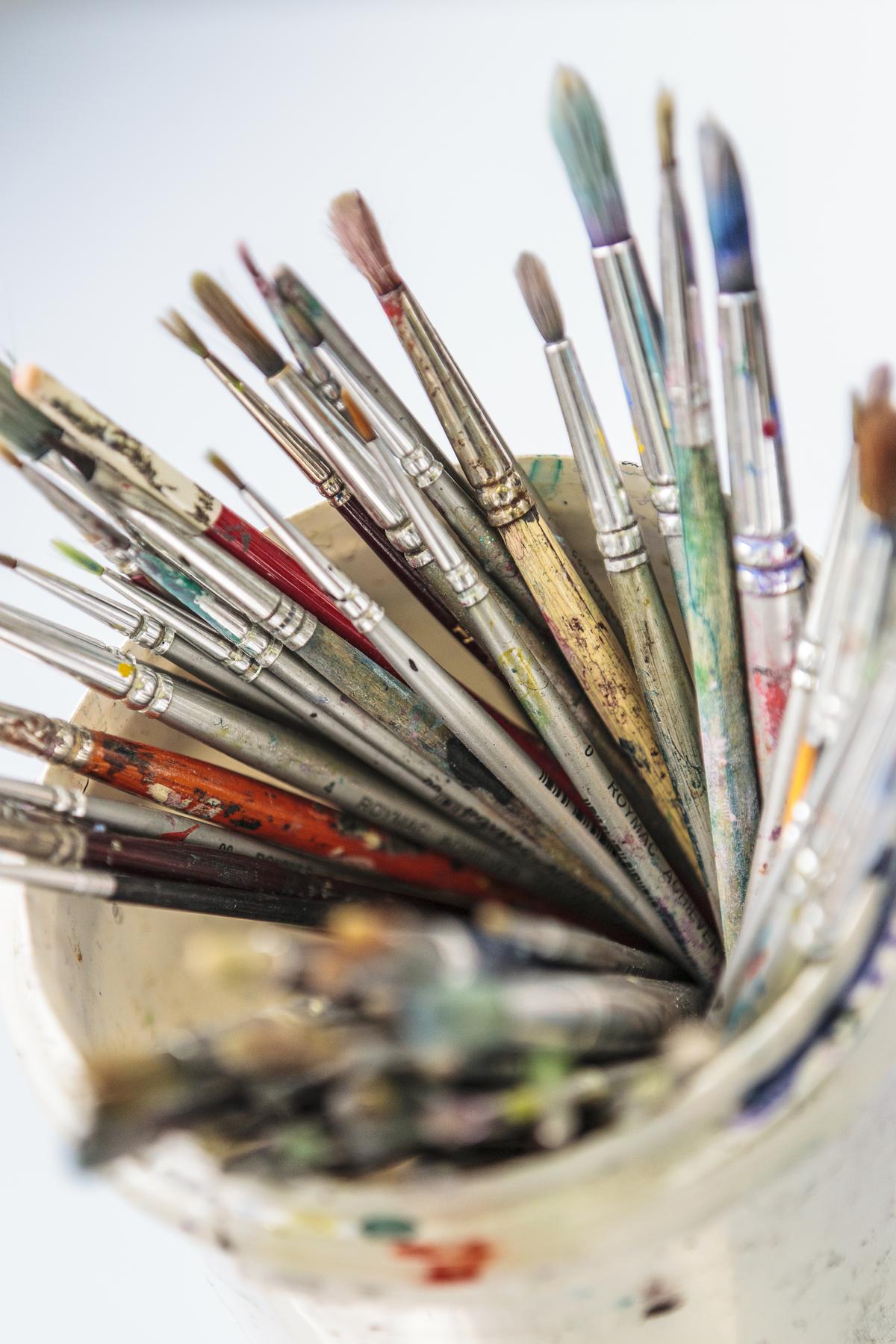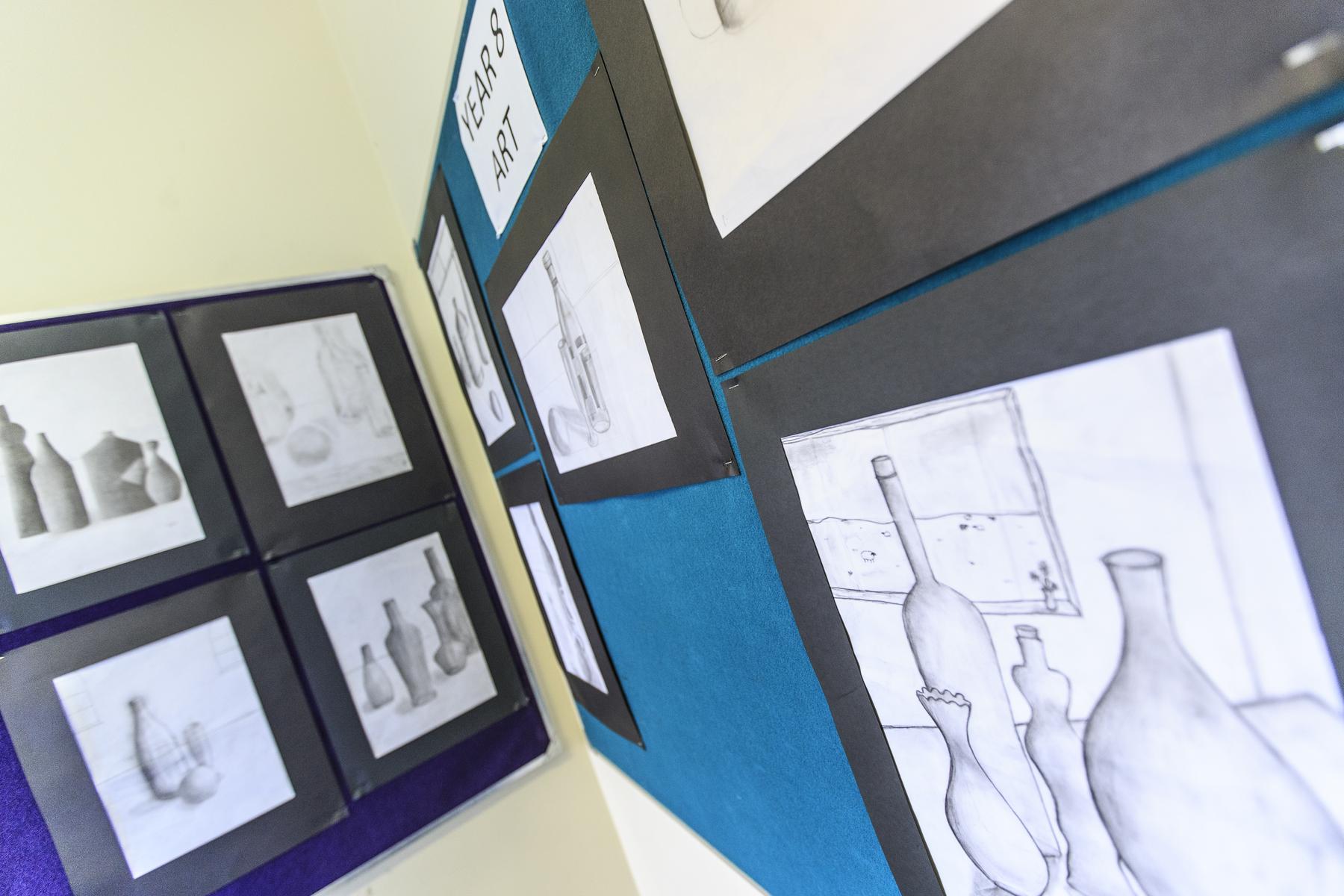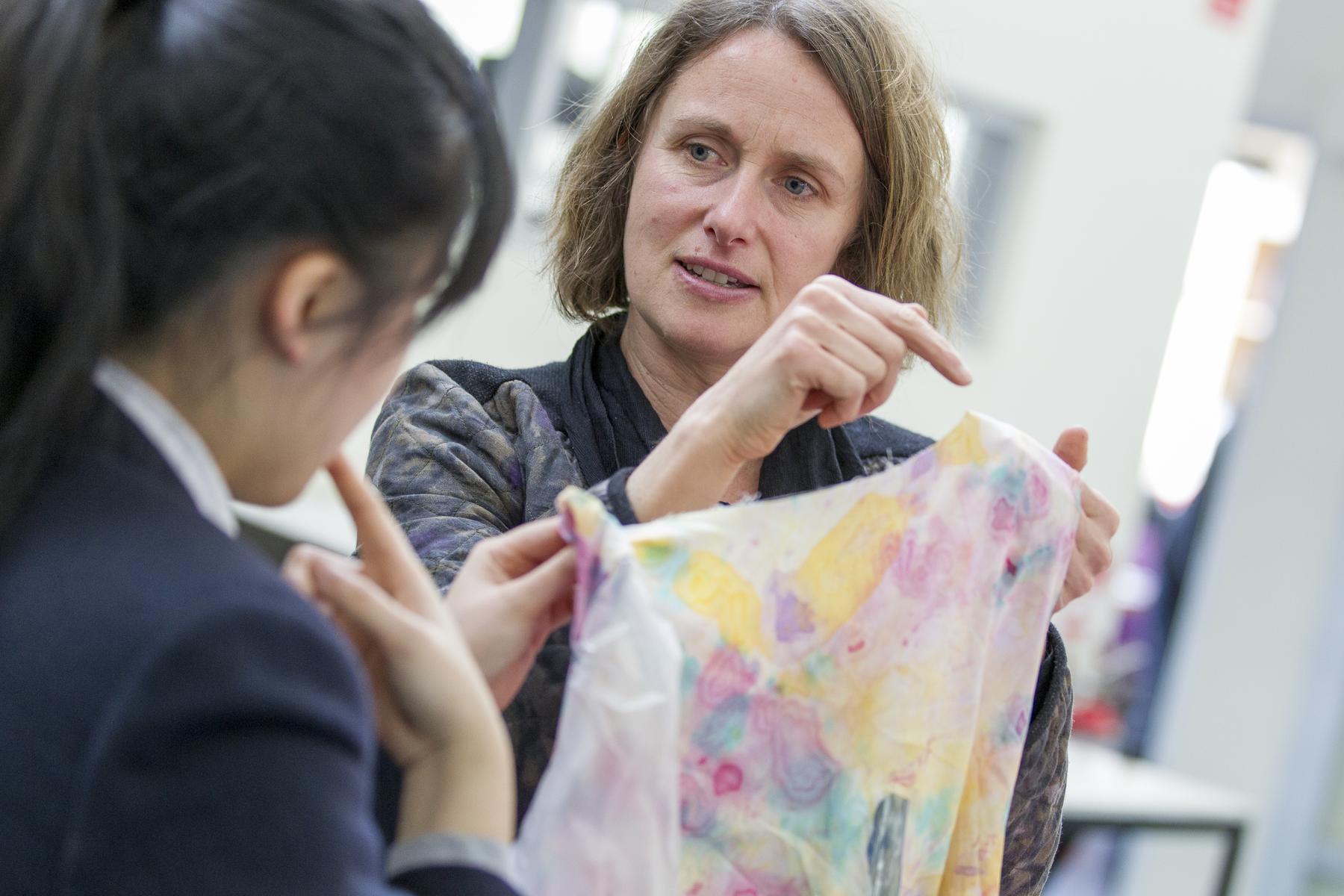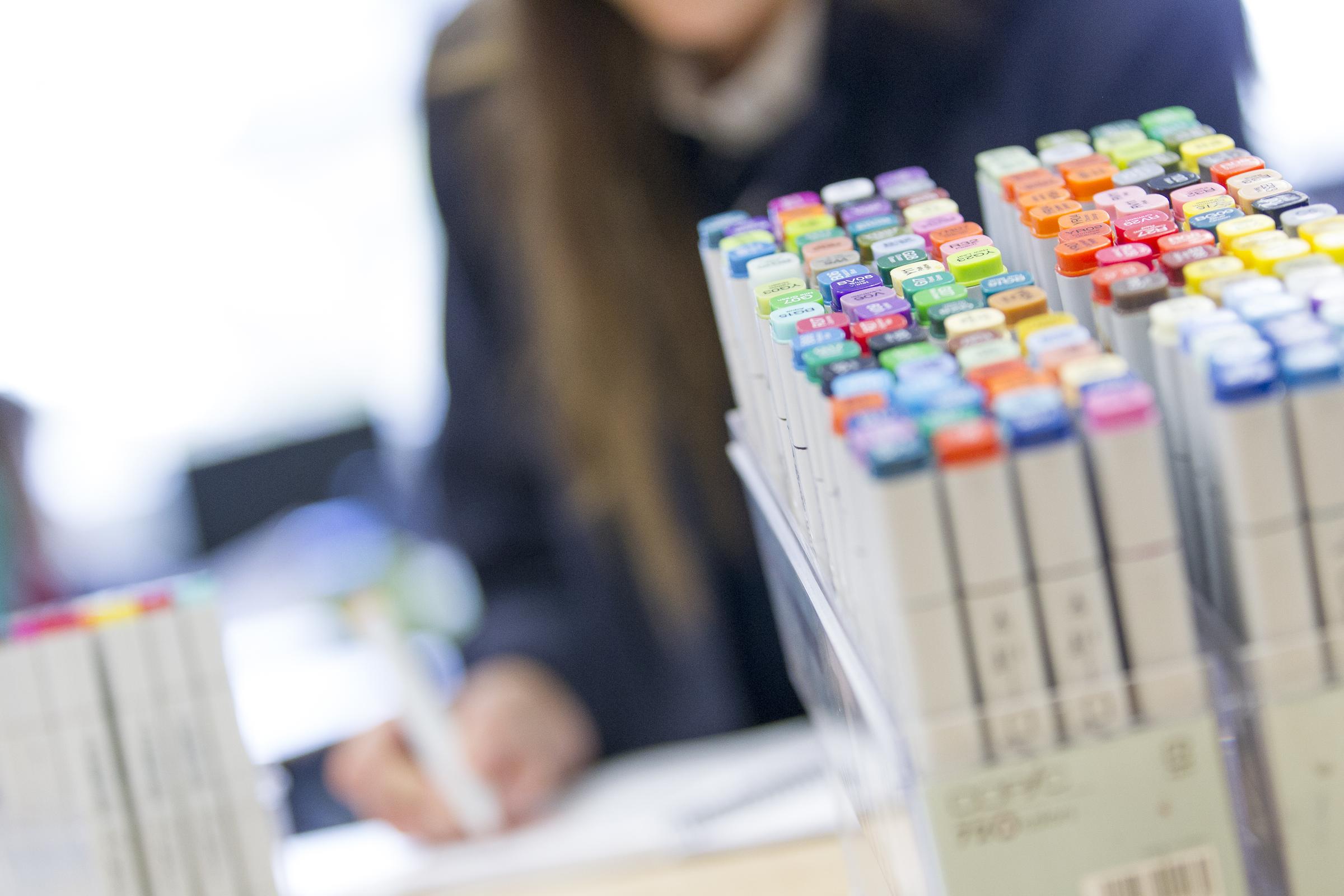
VCE Arts
Dance
Dance is the language of movement. This study is designed to develop a broad understanding and appreciation of dance through the integration of practical and theoretical aspects of learning in the context of composition and performance. It also allows students to develop and refine their technical and compositional skills by exploring a personal and learnt movement vocabulary and ways in which ideas are communicated in their own and others’ dance. Students wishing to complete Units 1 & 2 Dance in Year 10 must successfully audition for the VCE Dance teacher at the latest one week prior to the close of subject selection.
DA1: DANCE 1
This unit enables students to explore the potential of the body as an instrument of expression. Students learn to apply knowledge of the safe use and care of the body in the development of their physical skills and movement categories.
DA2: DANCE 2
This unit allows students to expand their dance vocabulary by exploring different ways of executing movement to produce contrasting qualities. Students apply their understanding of the expressive capacity of different movement qualities to the learning, composition and performance of dance works.
Note: There is a fee associated with this course of $150.00 per year.**
DA3: DANCE 3
In units 3 and 4, students develop and refine compositional skills by exploring ways in which the intention of the dance maker can be expressed through the arrangement of movement within a structure, and using spatial organisation and group structures.
DA4: DANCE 4
This unit focuses on choreography, rehearsal and performance of a unified solo dance work which has a beginning, development/s and resolution. When rehearsing and performing this work students focus on expressive and accurate execution of choreographic variations of spatial organisation and demonstration of performance skills. Students also document and analyse the dance-making and performance processes involved in the choreography, rehearsal and performance of the unified solo dance work.
Note: There is a fee associated with this course of $150.00 per year.**
Levels of achievement - Units 3 and 4
School Assessed work and two end of year examinations:
· Unit 3 school assessed coursework: 25 per cent
· Units 3 and 4 composition and performance examination: 50 per cent
· Units 3 and 4 Written Examination: 25 per cent
Drama
Drama provides students with the opportunity to examine and explore the ways in which drama gives form to, and makes meaning of, a range of social, political, cultural and historical contexts. It focuses on the development of expressive skills within dramatic structures and the development and performance of imagined characters, achieved through the refinement of skills, techniques and processes in the creation and presentation of dramatic works.
DR1: INTRODUCING PERFORMANCE STYLES
In this unit students study performance styles from a range of social, historical and cultural contexts. They examine drama traditions of ritual and storytelling to devise performances. This unit focuses on creating, presenting and analysing a devised ensemble performance that includes real or imagined characters. They document the processes they use as they explore a range of stimulus material, and experiment with production areas, dramatic elements, conventions and performance styles. This unit also involves analysis of a student’s own performance work and a work by professional drama performers.
DR2: AUSTRALIAN IDENTITY
In this unit students study the work of selected drama practitioners and associated performance styles. This also involves exploring aspects of Australian identity evident in contemporary drama practice. This unit focuses on the use and documentation of the processes involved in constructing a devised mini-solo and ensemble performance. Students create, present and analyse a performance based on a person, an event, an issue, a place, an artwork, a text and/or an icon from a contemporary or historical Australian context.
Note: There is a fee of $120.00 associated with Drama 1 & 2.**
DR3: DEVISED ENSEMBLE PERFORMANCE
In this unit students explore the work of drama practitioners and draw on contemporary practice as they devise ensemble performance work. They work collaboratively to devise, develop and present an ensemble performance. Students create work that reflects a specific performance style or one that draws on multiple performance styles and is therefore eclectic in nature. Throughout development of the work they experiment with transformation of character, time and place, and application of symbol. Students devise and shape their work to communicate meaning or to have a specific impact on their audience. Students analyse and evaluate a professional drama performance selected from the prescribed VCE Drama Unit 3 Playlist published annually on the VCAA website.
DR4: DEVISED SOLO PERFORMANCE
This unit focuses on the development and the presentation of devised solo performances. Students develop skills in extracting dramatic potential from stimulus material and use play-making techniques to develop and present a short solo performance. They experiment with application of symbol and transformation of character, time and place. They apply conventions, dramatic elements, expressive skills, performance skills and performance styles to shape and give meaning to their work. Students further develop and refine these skills as they create a performance in response to a prescribed structure. They consider the use of production areas to enhance their performance and the application of symbol and transformations.
Levels of achievement - Units 3 and 4
School Assessed work and two end of year examinations:
Unit 3 &4 School assessed coursework: 40 per cent
Units 3 & 4 Solo performance examination: 35 per cent
Units 3 &4 Written Examination: 25 per cent
Note: There is a fee of $160.00 associated with Drama 3 & 4.**
Media
The media is ubiquitous in today’s world. Working on a personal, local, national and global level, media is deeply embedded within life and culture. It entertains, teaches, informs, and shapes audiences’ perception of their lives and the worlds in which they live. Stories in all their forms are at the heart of the media and its relationship with audiences. Through stories narratives are constructed that engage, and are read, by audiences. Representations of ideas, realities and imagination are constructed and deconstructed, remixed and reimagined with ever increasing technological sophistication, ease and speed to engage audiences.
ME1: MEDIA FORMS, REPRESENTATIONS AND AUSTRALIAN STORIES
Outcome 1 Media Representations: The media plays an important role in shaping society and the values and beliefs of the audience. In this unit we look at representations of gender and race in the media.
Outcome 2 Media Forms in Production: Students use the media production process to design, produce and evaluate media representations for specified audiences in a range of media forms.
Outcome 3 Australian Stories: Stories have always been a pivotal part of culture. Australian media is built on fictional and non-fictional stories that reflect our local, national and global cultural histories. Students analyse how the features of Australian fictional and non-fictional narratives in two or more media forms.
ME2: NARRATIVE ACROSS MEDIA FORMS
Outcome 1 Narrative, Style and Genre: In this area of study students explore and examine how narratives construct realities and meaning for audiences. Students analyse the intentions of media creators and producers and the influences of narratives on the audience in different media forms.
Outcome 2 Narratives in Production: Narratives are created through a production process that involves the conceptualisation and development of ideas, pre-production, production, post-production and distribution. Students create, develop and construct narratives.
Outcome 3 Media and Change: Developments in media technologies have dramatically altered the media landscape and the relationship between the media and its audiences. Students discuss the influence of new media technologies on society, audiences, the individual, media industries and institutions.
Note: There is a fee associated with this course of $110.00 per year.**
ME3: MEDIA NARRATIVES AND PRE-PRODUCTION
Outcome 1 Narrative and Ideology: Students examine fictional and non-fictional narratives in the form of film and/or television and/or radio and/or audio product (and/or photographic and/or print products.
Students analyse how narratives are constructed and distributed.
Outcome 2 Media Production Development: Students conduct an investigation of aspects of the media form in which they will work, developing knowledge of narrative, genre, style, media codes and conventions and aspects of the works of media practitioners relevant to their proposed production. Students research a media form and experiment with media technologies and media production processes to inform and document the design of a media production.
Outcome 3 Media Production Design: Media production designs are a set of written and visual documents that detail the stages of production of a proposed product. The production design communicates both creative vision and thorough planning. Students develop and document a media production design in a selected media form for a specified audience.
ME4: MEDIA PRODUCTION AND ISSUES IN THE MEDIA
Outcome 1 Media Production: The production, post-production and distribution stages of a media product are a natural progression from the pre-production stage of the media production process. Students produce, the media product designed in Unit 3.
The relationship between the media and audiences has never been more complex. The contemporary media landscape poses issues and challenges for the way that academics and commentators have traditionally theorized the nature of communication. Students discuss issues of agency and control in the relationship between the media and its audience.
Note: There is a fee associated with this course of $110.00 per year.**
Music Performance
Year 11 is a general music course. In Year 12 students need to decide between Music Repertoire and Music Contemporary. (This decision can be changed and/or finalised in 2023 if students are unsure at this stage)
There are no prerequisites for entry to Units 1, 2 and 3. Students must undertake Unit 3 and Unit 4 as a sequence. Ideally, to undertake Units 3 and 4 Music, students should have about three years’ experience prior to Year 11 on a musical instrument or voice, and it is recommended that students complete Units 1 & 2 before Units ¾.
VCE MUSIC
UNIT 1 Organisation in Music & UNIT 2 Effect in Music
These units focus on building performance and music language skills. Students present performances in groups and as a soloist using one or more instruments. Students explore and develop their understanding of how music is organised. By performing, creating, analysing and responding to music works that exhibit different approaches, students explore and develop their understanding of the possibilities of musical organisation. Each unit culminates in a formal performance evening for family and friends.
OC1: Performing.
They prepare and perform ensemble and/or solo musical works to develop technical control, expression and stylistic understanding on their chosen instrument/sound source. At least two works should be associated with their study of approaches to music organisation.
OC2: Creating
Students should demonstrate their understanding of musical organisation and characteristics of at least one work selected for study in Area of Study 3.
OC3: Analysing and Responding
Students develop skills in aural and listening analysis and respond to a range of excerpts in different styles and traditions.
Note: There is a fee associated with this course of approx. $20.00 per year to cover their Top Class Music excursion.
UNITS 3 AND 4: MUSIC CONTEMPORARY PERFORMANCE
This study offers pathways for students whose performance practice include improvisation, uses collaborative and aural practices in learning, often takes recordings as a primary text (such as music production) and projects a personal voice (such as singer/songwriters).
Students may present with any instrument or combination of instruments which will be suitable to convey understanding of the key knowledge and application of key skills for Outcome 1, with styles including (but not limited to) rock, pop, jazz, EDM, country, funk and R&B.
Students prepare a program for assessment in a live performance. They may be assessed as primarily a member of a group or as a solo performer. All performances must include at least one ensemble work with another live musician and an original work created by an Australian artist since 1990. All performances must include a personally reimagined version of an existing work. Original works may also be included in the program.
Students submit a program list along with a Performer’s Statement of Intent.
UNITS 3 AND 4: MUSIC REPERTOIRE PERFORMANCE
Students may present on any instrument for which there is an established repertoire of notated works. They work towards a recital program that demonstrates highly developed technical skills and stylistic refinement as both a soloist or as an ensemble member. Music styles in this study may include (but are not limited to) early music, baroque, classical, romantic, 20th and 21st century art music styles, musical theatre, and classical music outside the Western tradition (for example, Indian, Chinese). The most significant task in Music Repertoire Performance is the preparation of a recital program of up to 20 minutes’ duration. Students may present primarily as a soloist or as an ensemble musician. However, students must present at least one ensemble work (that is, a performance with at least one other live musician) as part of their final program and include at least one work created since 1990 by an Australian composer. Programs may also consist entirely of ensemble works, with one or more students being assessed. One work in the final program must be selected from the separately published Prescribed List. An application process will apply for instruments without a list. Students must also bring copies of their works to the performance examination.
Whether students decide on Music Contemporary or Repertoire, the outcomes and assessment are the similar:
OC1: Performing
In this unit students begin developing the program they will present in Unit 4.
OC2: Analysing for performance
Students investigate how interpretation and a sense of personal voice may be developed in performance.
Students investigate and implement approaches for developing a command of their instrument, presentation skills and strategies for reimagining an existing work.
OC3: Responding
Students develop their aural analysis and comparison skills and music language (theory and aural) skills
End-of-year performance examination
The student will give a live performance and may present as a soloist, or as a member of a group and this contributes 50 per cent to the study score
- Duration of examination: Maximum 20 minutes (one assessed performer)
- 25 minutes (two or three assessed performers)
- 30 minutes (four assessed performers)
- 35 minutes (five or six assessed performers)
Students will present a live performance. Performed works will include a reimagining of an existing work and an original work created by an Australian artist since 1990.
End-of-year aural and written examination
Duration: 60 minutes. This contributes 20 per cent to the study score
- Unit 4 School-assessed Coursework: 10 per cent
- Unit 4 Performance examination: 50 per cent
- end-of-year aural and written examination: 20 per cent
Note: There is a fee associated with this course of approx.$20.00 per year to cover their Top Class Music excursion.
Art: Making and Exhibiting (PREVIOUSLY STUDIO ARTS)
VCE Art Making and Exhibiting introduces students to the methods used to make artworks and how artworks are presented and exhibited.
Students use inquiry learning to explore, develop and refine the use of materials, techniques, and processes and to develop their knowledge and understanding of the ways artworks are made. They learn how art elements and art principles are used to create aesthetic qualities in artworks and how ideas are communicated through the use of visual language. Their knowledge and skills evolve through the experience of making and presenting their own artworks and through the viewing and analysis of artworks by other artists.
Visiting and viewing exhibitions is a necessary part of this study. It helps students understand how artworks are displayed and conserved, and how exhibitions are curated and promoted. Visiting and viewing exhibitions also has an influence on the students’ own practice and encourages them to broaden and develop their own ideas and thinking around their own art making.
AME1: EXPLORE, EXPAND, AND INVESTIGATE
In Unit 1 students explore materials, techniques, and processes in a range of art forms. They expand their knowledge and understanding of the characteristics, properties and application of materials used in art making. Students also explore the historical development of specific art forms and investigate how the characteristics, properties and use of materials and techniques have changed over time. Students also investigate and are inspired by the different ways Australian artists use materials, techniques, and processes. Their exploration and experimentation are documented in both visual and written form in a Visual Arts journal.
AME2: UNDERSTAND, DEVELOP AND RESOLVE
In Unit 2 students continue to research how artworks are made by investigating how artists use aesthetic qualities to represent ideas in artworks. They broaden their investigation to understand how artworks are displayed to audiences, and how ideas are represented to communicate meaning.
Students respond to a set theme and progressively develop their own ideas. Students learn how to develop their ideas using materials, techniques and processes, and art elements and art principles. They consolidate these ideas to plan and make finished artworks, reflecting on their knowledge and understanding of the aesthetic qualities of artworks. The planning and development of at least one finished artwork are documented in their Visual Arts journal.
Students also begin to understand how exhibitions are planned and designed and how spaces are organised for exhibitions. They also investigate the roles associated with the planning of exhibitions and how artworks are selected and displayed in specific spaces.
AME3: COLLECT, EXTEND AND CONNECT
In Unit 3 students are actively engaged in art making using materials, techniques, and processes. They explore contexts, subject matter, and ideas to develop artworks in imaginative and creative ways. They also investigate how artists use visual language to represent ideas and meaning in artworks. Students use their Visual Arts journal to record their art making. From the ideas documented in their Visual Arts journal, students plan and develop artworks.
Students present a critique of a selection of their developmental work and artworks from their Visual Arts journal to their peers. After the critique students evaluate their work and revise, refine, and resolve their artworks.
Students will visit an art exhibition. The exhibition visited will provide another source of inspiration and influence for the artworks they make. Students also research the exhibition of artworks in the art exhibition and the role a curator has had in the planning and writing information about the exhibition.
AME4: CONSOLIDATE, PRESENT AND CONSERVE
In Unit 4 students make connections to the artworks they have made in Unit 3, consolidating, and extending their ideas and art making to further refine and resolve artworks in specific art forms. The progressive resolution of these artworks is documented in the student’s Visual Arts journal, demonstrating their developing technical skills in a specific art form as well as their refinement and resolution of subject matter, ideas, visual language, aesthetic qualities, and style.
Students organise the presentation of their finished artworks. They make decisions on how their artworks will be displayed, the lighting they may use, and any other considerations they may need to present their artworks. Students also present a critique of their artworks and receive and reflect on feedback from their peers.
Students will visit an art exhibition, different to what was viewed in Unit 3. They will review the methods used and considerations involved in the presentation, conservation, and care of artworks in the exhibition, as well as the conservation and care of their own artworks.
Note: There is a fee associated with this course with Studio Arts 3 & 4 of $160.00 per year.**
Visual Communication Design
Visual Communication Design is intended to assist students in the understanding, use and interpretation of a range of visual communications. It involves a study of the vocabulary and grammar of visual communication, which includes an understanding of, and application of, drawing and drawing conventions, design elements, and principles and function of design in communication. This study also provides the opportunity to develop an informed, critical and discriminating approach to visual communications encountered in everyday life.
VCD1: DRAWING AS A MEANS OF COMMUNICATION
This area of study introduces the knowledge and skills that underpins some of the stages in the design process of generating ideas, developing concepts and refinement of visual communications. It focuses on the development of visual language and design thinking. Students use observational, visualisation and presentation drawing as the means by which ideas and concepts are communicated.
VCD2: APPLICATIONS OF VISUAL COMMUNICATION WITHIN DESIGN FIELDS
This unit focuses on the application of visual communication design knowledge, design thinking and drawing methods to create visual communications to meet specific purposes in designated design fields.
Note: There is a fee associated with this course of $130.00 per year.**
VCD3: VISUAL COMMUNICATION DESIGN PRACTICES
In this unit students gain an understanding of the process designers employ to structure their thinking and communicate ideas with clients, target audiences, other designers and specialists.
VCD4: VISUAL COMMUNICATION DESIGN DEVELOPMENT, EVALUATION AND PRESENTATION
The focus of this unit is on the development of design concepts and two final presentations of visual communications to meet the requirements of the brief. This involves applying the design process twice to meet each of the stated communication needs.
Note: There is a fee associated with this course of $130.00 per year.**

